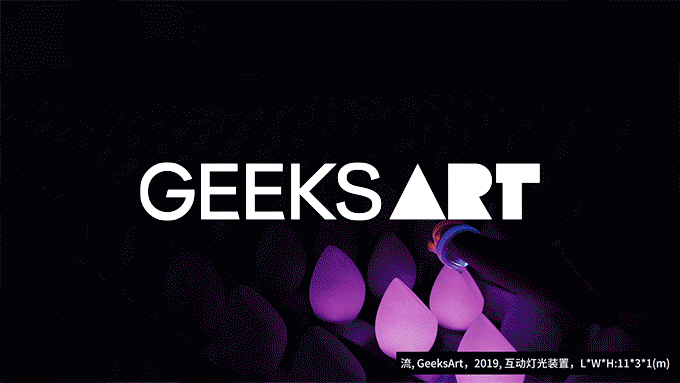这是我们为汵奇咖啡设计的第三家店。在这三家店之中,我们没有刻意的使用相同的材料或设计元素,但三家店却有着一以贯之的气质,我们的方法是:尊重场地的文脉和历史,并使用最朴素的方法突出这种“场所的身份”。
This is the third store we have designed for Cenchi coffee. In these three stores, we did not deliberately plan to use the same materials or design elements, but the three stores undoubtedly show a consistent character. Our methodology requires respect of the original context and history of the site, while using the simplest way to highlight the “identity of the place”.
汵奇咖啡第一家店的开放式吧台与白瓷砖、第二家店的城市家具与铝合金门窗分别对应了老城区的在地元素。这第三家店的选址位于原北京卫星厂改造后的园区内,场地内具有一个标志性的元素:连续拱顶。它是上世纪六七十年代常用的结构形式,具有鲜明的时代特征。拱的形态,主要原因是当时为了快速标准化的搭建厂房,体现出结构和建造的合理性。但同时,拱下的空间可以提供场所的安全感和归属感。虽然这不是建造者有意为之,但我们把它看作可以形成咖啡馆气质的空间元素加以保留和发挥。拱的元素因此变成了连接两个时代的“任意门”。
The open bar and white tiles of the first Cenchi store and the urban furniture and aluminum doors and windows of the second one echo ground elements commonly found in Beijing’s old city. The site of the third store, located in the converted campus of the former Beijing Satellite Factory, features a signature element: continuous vaults. It was frequently used structural form in the 1960s and 1970s, with distinct characteristics of that era. The shape of the arch was mainly due to the rapid standardization of plant construction demanded by that time and reflects rationality in structure and construction. But at the same time, the space under the arch can provide a sense of security and belonging. Although this is not in the intention of the builder, we regard it as a spatial element worthy to be preserved and enjoyed. The element of the arch thus becomes a “random gate” connecting the past and the present time. the two ages.
我们的方案是在原先的三个圆拱之下增加三个半径更小的椭圆拱,起拱点也从高处降到地面,使整个空间都处在拱顶的范围内,拱变成了空间本身。我们希望来到这个空间的人有这样一种体验:从空间的外部看到连续拱顶的存在,产生对内部空间的形态的期待和好奇;走进之后发现拱的几何形态的戏剧性变化,因而思考其背后的合理性。这种“看似不合理”的体验也曾出现在汵奇咖啡前两家店的空间体验之中。“拱套拱”的技术见于一些桥梁和古典时期的穹顶建筑之中,是一种让受力分布更加合理的结构形式,因而在意外之余,体验者会最终阅读到空间的“合理之美”。
Our plan is to add three elliptical arches with smaller radius under the original three circular arches, and the arch point is also lowered from the height to the ground, so that the entire space is within the scope of the arch, and the arch engulfs the entire of volume of the space itself. We hope that visitors may have such an experience: from the outside they might take a glance at a series of continuous vaults, generating expectation and curiosity about the form of the internal space; After entering, the dramatic changes in the geometry of the arch might be found, the rationality behind it might also be perceived. This “seemingly irrational” experience refers back to the space feeling of Cenchi Coffee’s first two stores. The “arch over arch” technique, found in some bridges and domes of the classical period, is a structural form that makes the weight distribution more reasonable, so it is hoped that after an initial outpour of surprise, the experience will eventually read the “rational beauty” of space.





三个拱形成了强烈的序列感,而拱下的空间分别以一张“大长桌”作为中心。它们分别是:“作为开放式吧台的长桌”、“可以作为吧台也可以为客人使用的长桌” 和“平时作为客区但可以升起成为杯测台的长桌”。三张桌子处于场地的轴线上,为三个空间赋予不同的功能。
The three arches create a strong sense of pattern, while the space under the arch is centered on a “large long table”. These include respectively: “A long table that serves as an open bar”, “a long table that can be used as a bar or for guests” and “a long table that normally serves as a guest area but can be raised to become a cup tester”. Three tables are positioned along the axis of the site, conferring different functions to three compartments.
为了避免在拱顶上安装灯具,我们把灯具和桌子设计成一个整体的家具,每一个小圆桌和长桌都有自己的局部照明。这样家具布置更加灵活和独立,就餐时照射在食物上的光线也更加柔和与集中。
In order to avoid installing lamps on the vault, we designed the lamps and tables as one piece of furniture, with each small round table and long table having its own local lighting. In this way, the furniture arrangement is more flexible and independent, and the light shining on the food during the meal is softer and more concentrated.

地面上的瓷砖是铺好后在现场打磨做出“磨损”的效果,打磨的深度是边打磨边决定的。此时场地内其他的部分已经完工,连续拱的表面做成了白色,立面的的玻璃门窗已经更换完毕,瓷砖的肌理和颜色成为决定场地气质的“最后一步”。在打磨师傅分几次小心翼翼的操作之后,我们清理开地面上的粉末,一片完全偶然性形成的地面肌理展现出来,打磨的深度使一部分釉面得以保留,其余的部分则露出砖坯的质感。这种处理彻底改变了场地原来黯淡的色调,在北京晴朗的阳光之下,咖啡馆一天中的大部分时间都洋溢着令人愉快的明亮光线。宽敞高大的空间、浅绿色的墙裙、打磨过的地砖、有课桌椅造型趣味的家具,让人仿佛回到电影“阳光灿烂的日子”描写的年代。
The tiles on the ground are polished on the spot to reproduce and effect of “wear-and-tear”, and the depth of sanding is determined ad libitum. At this time, the rest of the site has been completed, the surface of the continuous arches has been whitened, glass doors and windows of the facade have been replaced, and the texture and color of the tiles have become the “last step” to determine the tone of the site. After several careful steps by the sander, we cleared the powder from the floor, revealing a completely accidental texture of the floor. The depth of the sanding allowed some of the glaze to remain, while the rest revealed the texture of the brick. This treatment completely changes the venue’s originally bleak hue, and under the clear Beijing sun, the cafe basks in delightfully bright light for most of the day. The spacious and tall space, light green wall skirts, polished floor tiles and interesting furniture with desks and chairs make people feel like returning to the era described in Jiang Wen’s 1995 classic movie “In the Heat of the Sun “.
▲项目平面
项目信息——
项目名称:汵奇咖啡卫星厂店
设计方: 空间站建筑师事务所
事务所网站:www.spacestationarchitects.com
事务所邮箱: contact@spacestationarchitects.com
主创设计师: 汪铮
项目地址: 北京市,海淀区
项目时间: 2023年
项目面积: 162平方米
摄影版权: SpaceStation
摄影网站: www.spacestationarchitects.com
设计时间:2023年5月-7月
施工完成:2023年11月
主创设计师:汪铮
项目负责人:廖惠琴
设计团队:向怀志
施工图负责人:许辉
商业模式咨询:凹凸合作社
给排水设计:宋颜波
暖通设计:高飞
电气设计:闫天雄
工程技术负责人:杨定荣
工程现场负责人:李益中
施工单位:北京东方盛泽建筑工程有限公司
摄影:金伟琦
摄影版权:空间站建筑师事务所


















